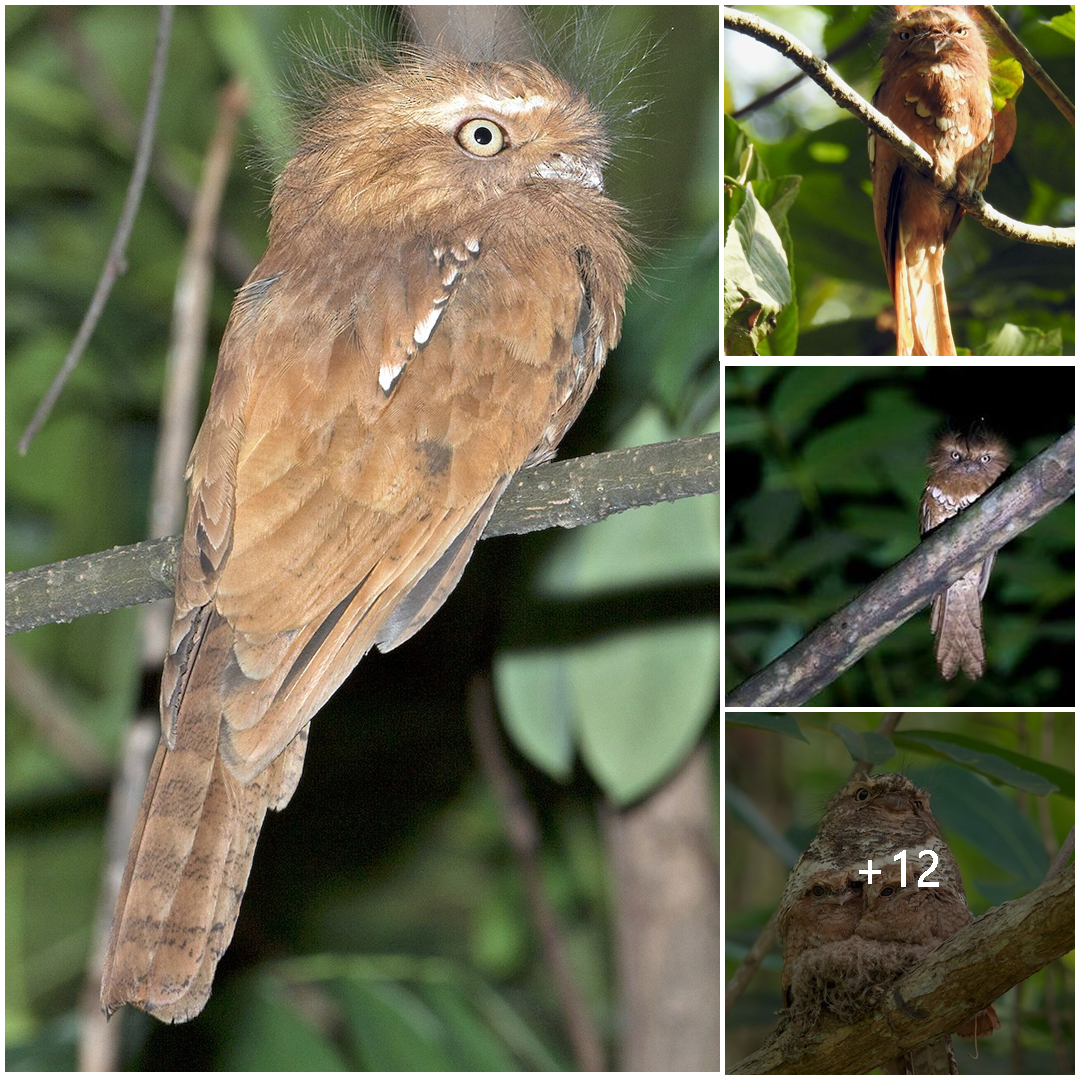
Batrachostomus hodgsoni: The Hodgson’s Frogmouth
Batrachostomus hodgsoni, commonly known as Hodgson’s Frogmouth, is a captivating species of bird belonging to the family Podargidae. Native to the lush forests and woodlands of Southeast Asia, this elusive nocturnal bird possesses unique characteristics that distinguish it from other avian species.
Physical Description:
Hodgson’s Frogmouth displays a distinctive appearance characterized by its large, wide mouth and cryptic plumage. Its plumage varies in coloration, ranging from mottled brown to reddish-brown, providing effective camouflage against tree bark and foliage. The bird’s broad, flattened bill and large eyes contribute to its nocturnal hunting abilities, allowing it to detect and capture prey in low-light conditions.
Habitat and Range:
This species is primarily found in the dense tropical and subtropical forests of Southeast Asia, including countries such as India, Nepal, Bhutan, Myanmar, Thailand, Laos, Vietnam, and southern China. Within its range, Hodgson’s Frogmouth inhabits a variety of forested habitats, including primary and secondary forests, bamboo thickets, and wooded ravines. It tends to favor areas with dense vegetation and ample roosting sites, where it can remain concealed during the day.
Behavior and Diet:
As a nocturnal bird, Hodgson’s Frogmouth is most active during the twilight hours, dusk, and dawn. It employs a sit-and-wait hunting strategy, perching motionless on branches or tree stumps while scanning the surroundings for prey. Its diet primarily consists of insects, including beetles, moths, and other flying insects, which it captures in flight or plucks from foliage with its specialized bill.
Breeding and Reproduction:
Little is known about the breeding behavior of Hodgson’s Frogmouth due to its secretive nature and remote habitat preferences. However, it is believed that the species constructs flimsy nests made of twigs, leaves, and moss in the branches of trees, where it lays a single egg. Both parents participate in incubating the egg and caring for the offspring until it is ready to fledge.
Conservation Status:
Although Hodgson’s Frogmouth is not currently considered globally threatened, it faces various threats to its survival, including habitat loss and degradation due to deforestation, logging, and agricultural expansion. Additionally, the species may be vulnerable to disturbance from human activities and predation by introduced species. Conservation efforts focused on preserving its forest habitat and raising awareness of its ecological importance are essential for ensuring the long-term survival of this captivating species.
Conclusion:
In conclusion, Batrachostomus hodgsoni, or Hodgson’s Frogmouth, represents a fascinating example of the diverse avian species found within the forests of Southeast Asia. With its cryptic plumage, nocturnal habits, and specialized hunting techniques, this elusive bird contributes to the rich tapestry of biodiversity in its native ecosystems. As efforts to conserve and protect its habitat continue, Hodgson’s Frogmouth serves as a symbol of the need for environmental stewardship and the preservation of Earth’s natural wonders.






